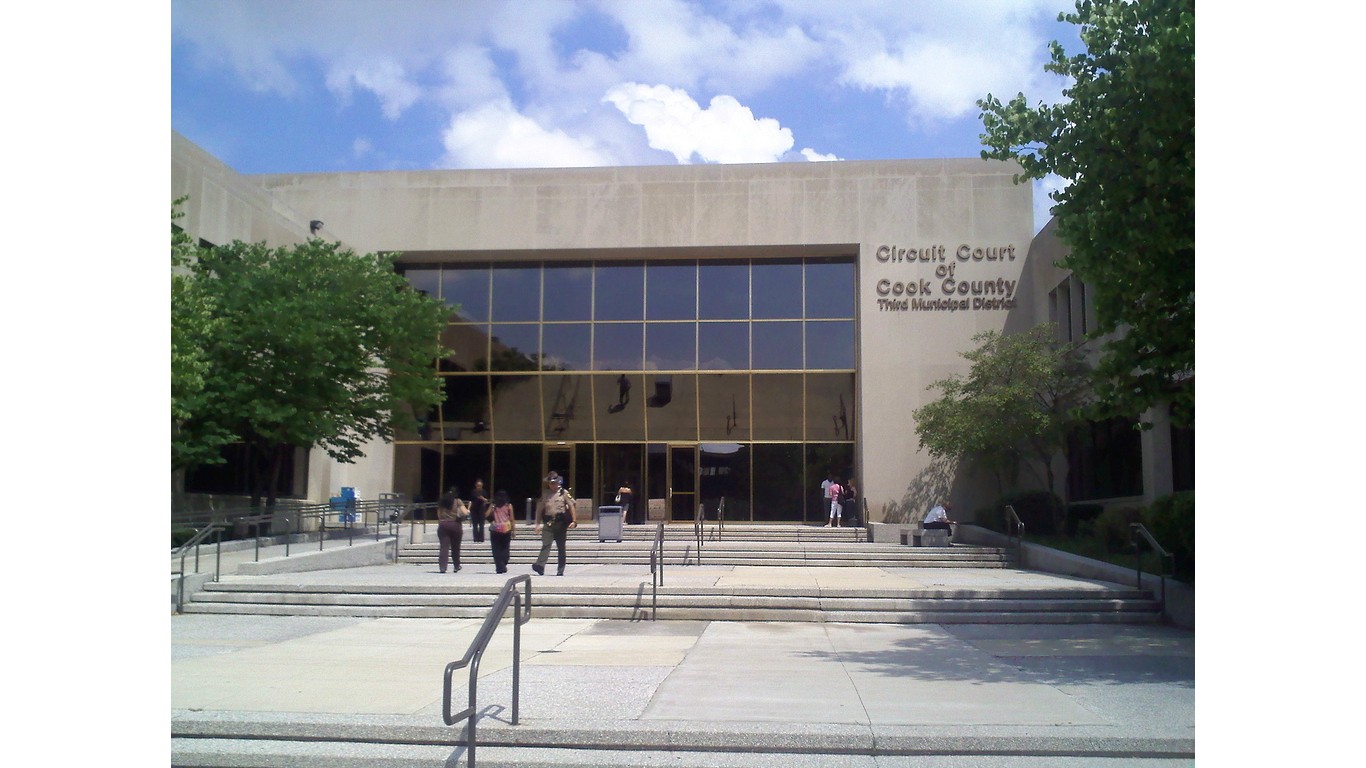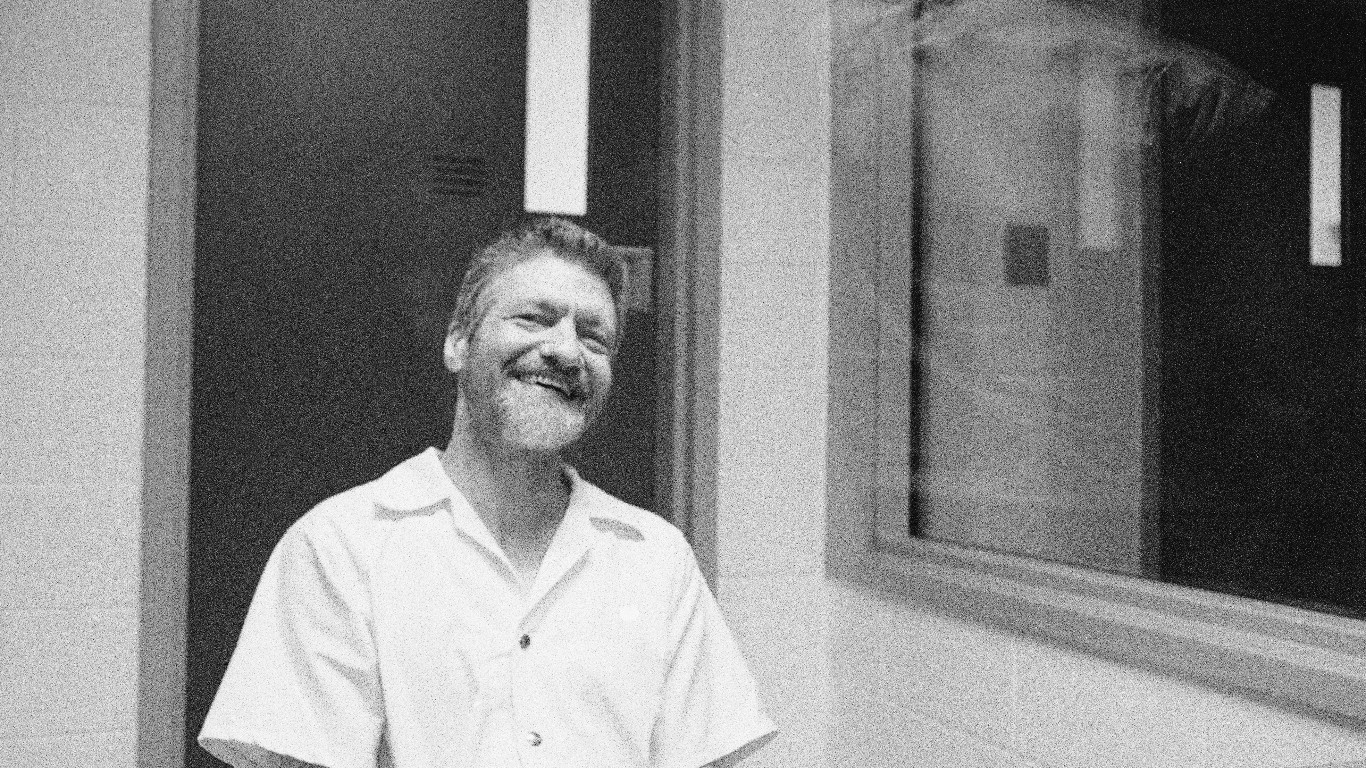
During its long history, the FBI has solved some of the most famous crimes in U.S. history. From terrorist bombings of airplanes and Nazi spy rings to massive white collar crimes, the FBI nearly always gets their man (or men) – and occasionally their woman (or women) – after years of painstaking investigations.
To compile a list of 40 of some of the biggest cases the FBI has ever worked on, 24/7 Tempo drew information from the FBI website. Using editorial discretion, we chose high-profile crimes that captivated the public’s interest and generated significant media coverage and required a significant amount of effort to solve (or remain unsolved). Our choices fall into a number of categories, including murder, kidnapping, and fraud. Some of the cases on the list have set records in FBI history, while others have resulted in new laws being passed.
The FBI doesn’t catch every criminal. The killer of a young starlet dubbed the Black Dahlia in 1947 in Los Angeles has yet to be identified. The hijacker D.B. Cooper jumped from an airplane with a bundle of cash and disappeared. (These are but two of the 22 famous unsolved crimes in America.)
Other crimes reverberate beyond their criminality. The deadly bombing of a church in Alabama and the killing of three young Freedom Rider workers galvanized the civil rights movement of the mid-1960s, and led to the passage of the Civil Rights Act. The 1916 Black Tom bombing in Jersey City forced the nation to change its espionage laws after it was found German agents were behind the act.
Click here to see the biggest cases ever investigated by the FBI
The public may not recall the kidnapping of one-month-old Peter Weinberger on Long Island in 1956, but because of the crime, the FBI can now begin investigating abductions after only 24 hours, instead of the seven-day waiting period previously prescribed by law. (These are the most notorious kidnappings in American history.)
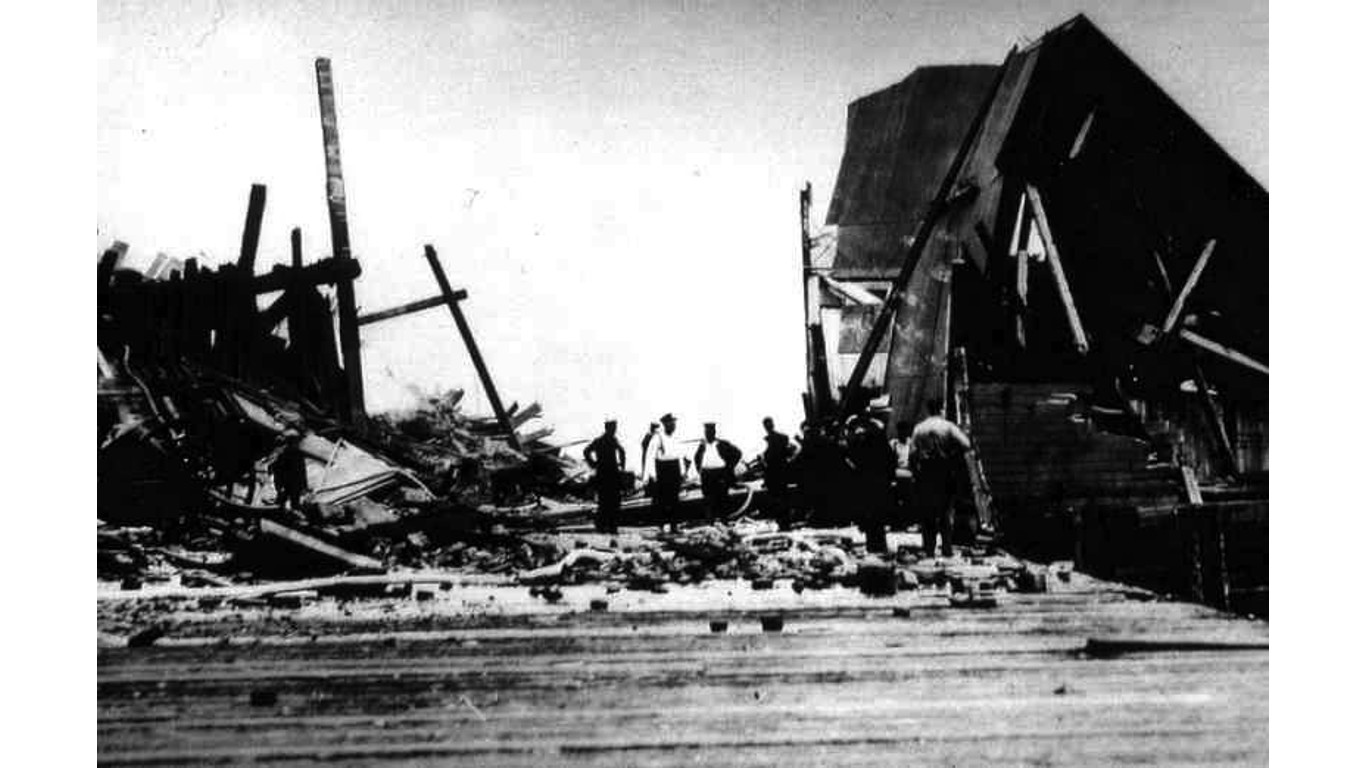
Black Tom bombing
> Year of the crime or start of the investigation: 1916
On July 30, 1916, German agents, trying to keep the U.S. – not yet fighting in World War I – from shipping armaments to the British and Russians, set off explosions at a munitions depot on Black Tom Island, off Jersey City, New Jersey, injuring at least a hundred people and killing four, including a baby. In addition, some $20 million worth of materiel was destroyed (amounting to about $500 million’s worth in today’s dollars). The event helped convince the U.S. to enter the war the following year. All 260 agents of the Bureau of Investigation, the FBI’s predecessor, worked the Black Tom case, eventually identifying most of the saboteurs, and Germany paid reparations after the war. The explosions led to the passage of the Espionage Act and the Sabotage Act, giving the bureau jurisdiction over the investigations into these crimes.
[in-text-ad]
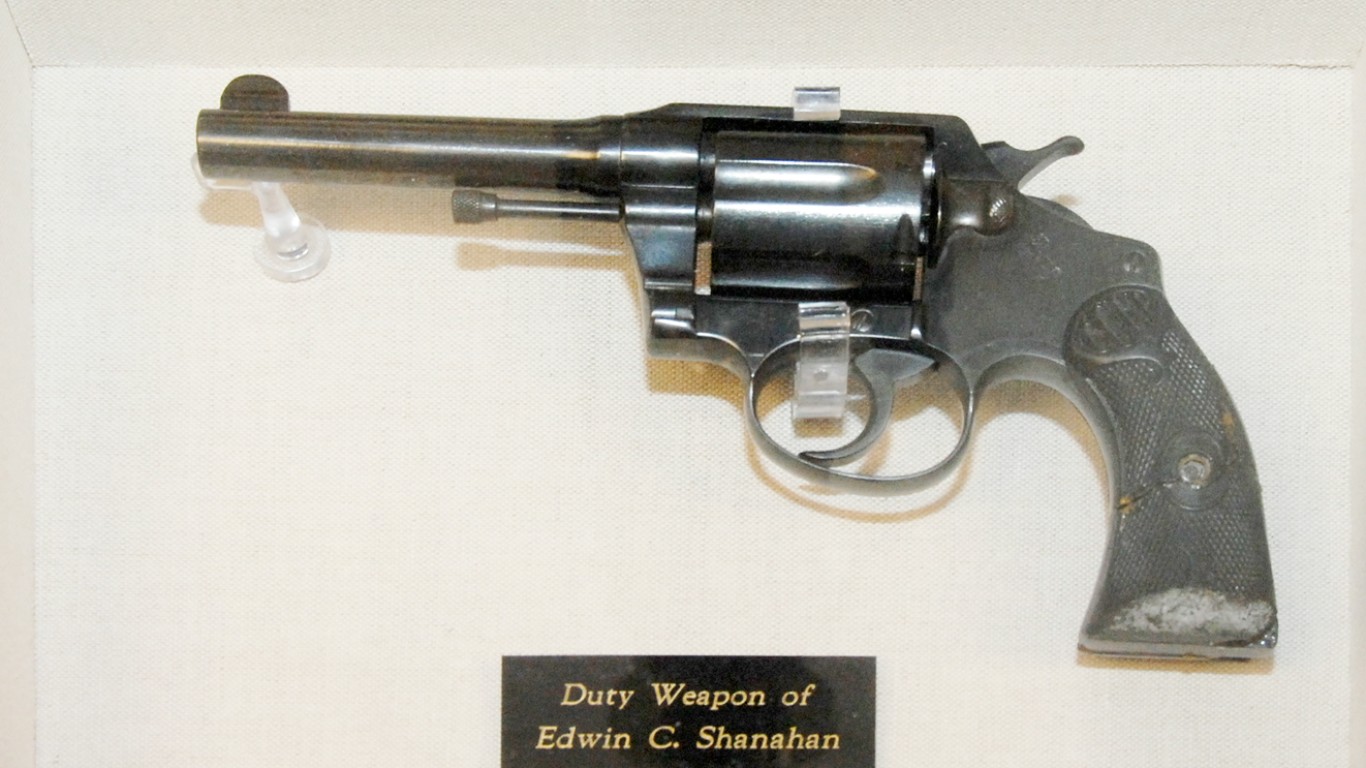
Murder of an Federal agent
> Year of the crime or start of the investigation: 1925
Agent Edwin C. Shanahan of the Bureau of Investigation was on the tail of habitual car thief Martin James Durkin – who had a long criminal record, including shooting and wounding police officers in Chicago and California – and tracked him to a garage in Chicago. When he attempted to arrest Durkin on Oct. 11, 1925, Durkin shot and killed him, marking the first time a BI agent had been killed in the line of duty. Durkin evaded capture until 1926, but was eventually captured, tried, convicted of Shanahan’s murder, and sentenced to 35 years at the penitentiary in Joliet, Illinois.
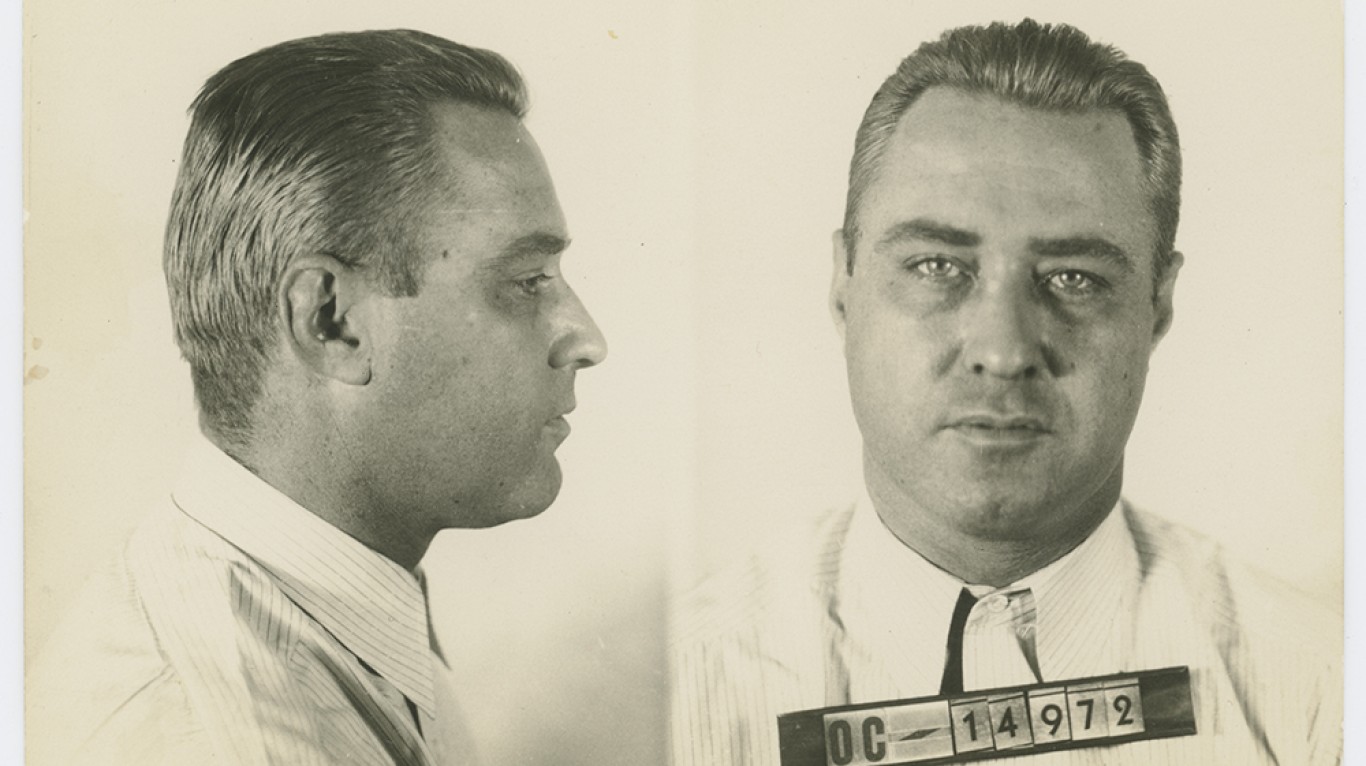
George “Machine Gun” Kelly kidnaps an oil magnate
> Year of the crime or start of the investigation: 1933
George “Machine Gun” Kelly and another gunman kidnapped wealthy oil tycoon Charles F. Urschel and a friend, Walter R. Jarrett, at Urschel’s home in Oklahoma City. The kidnappers released Jarrett, but held Urschel for a ransom of $200,000. Urschel was released nine days after the ransom was paid. Following an extensive investigation, agents zeroed in on Kelly and his wife, Kathryn Thorne Kelly, as partners in the crime. When agents confronted Kelly, he allegedly uttered the famous line: “”Don’t shoot, G-Men! Don’t shoot, G-Men!” as he surrendered. On Oct. 12, 1933, George and Kathryn Kelly were convicted and sentenced to life imprisonment.
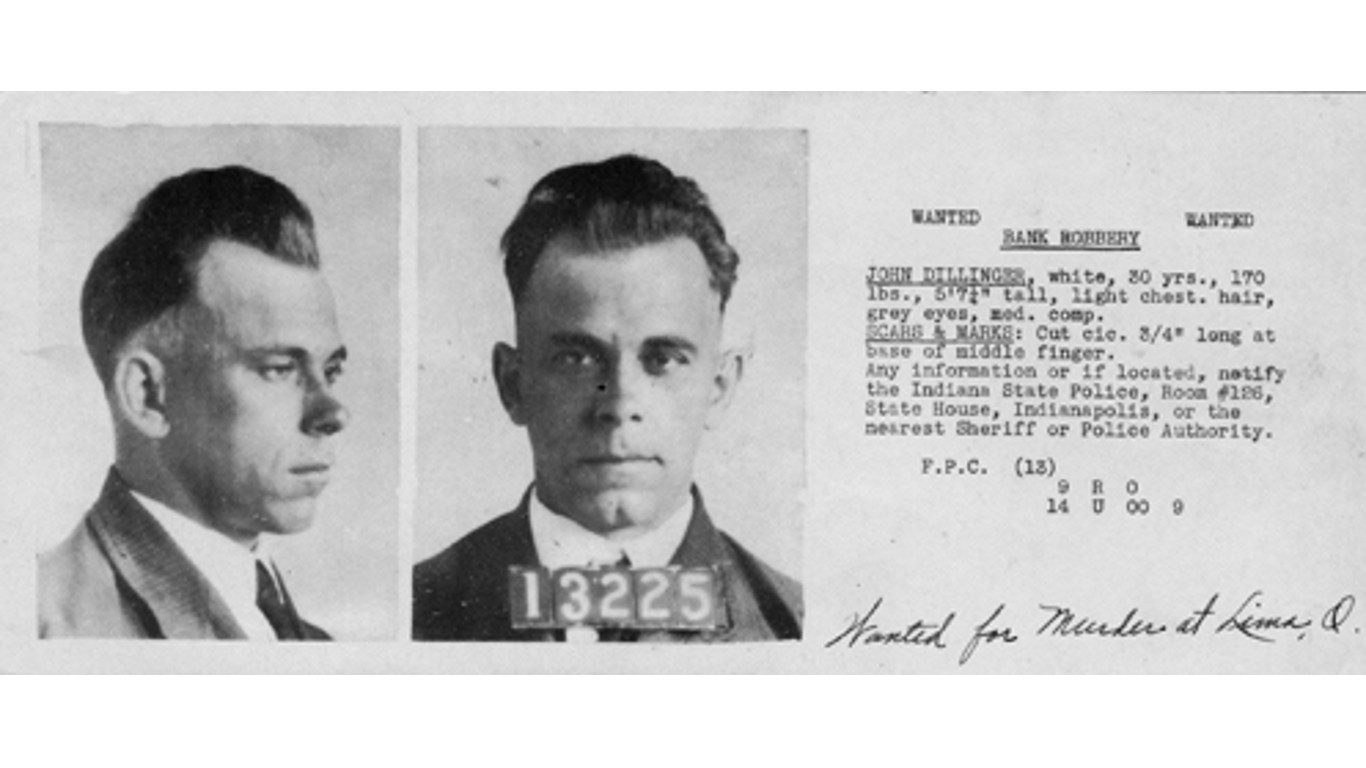
John Dillinger gang
> Year of the crime or start of the investigation: 1933
Depression-era citizens were looking for an anti-hero, and they found it in John Dillinger. From September 1933 until July 1934, he and his henchmen robbed banks and staged jailbreaks, killing 10 men and wounding seven others along the way. By stealing a sheriff’s car and driving it over the Indiana-Illinois state line, Dillinger violated the National Motor Vehicle Theft Act, a federal offense that brought in the FBI. Agency director J. Edgar Hoover assigned Special Agent Samuel A. Cowley to head the bureau’s investigation of Dillinger. Cowley set up headquarters in Chicago, where he and Melvin Purvis, the special agent in charge of the Chicago office, worked with East Chicago policemen in tracking down all tips about the criminal. A tip from a madam of a brothel in Gary, Indiana, led agents to a theater in Chicago where agents opened fire and ended Dillinger’s life of crime. Yet Dillinger’s legend has lived on in several movies, including the 2009 film, “Public Enemies,” in which Johnny Depp played the criminal.
[in-text-ad-2]

Kansas City Massacre
> Year of the crime or start of the investigation: 1933
Famous outlaw Charles Arthur “Pretty Boy” Floyd, along with associates Vernon Miller and Adam Richetti, hatched a plan to free their friend, Frank Nash, a federal prisoner. Nash was in the custody of several law enforcement officers who were returning him to the U.S. Penitentiary at Leavenworth, Kansas, from which he had escaped on Oct.19, 1930. At the Union Railway Station in Kansas City, the gang took action to free their friend and a shootout ensued, leaving two police officers, two FBI agents, and the prisoner dead. The brutality of the crime shocked the nation. Floyd was later killed by FBI agents, his last words being, “I’m done for; you’ve hit me twice.”

Kidnapping and murder of Charles Ross
> Year of the crime or start of the investigation: 1937
Late one evening in September 1937, Charles S. Ross, the wealthy president of a greeting card company, was driving toward Chicago when he was kidnapped by a gang led by John Henry Seadlund, a career criminal. When a fight broke out among the kidnappers, Ross was killed along with one of the criminals. In one of the most far-reaching FBI investigations at that time, Seadlund was later caught when agents traced the serial numbers of the $50,000 ransom money to him in Los Angeles. He later confessed to the kidnapping and murders, and was electrocuted in Chicago on July 14, 1938.
[in-text-ad]
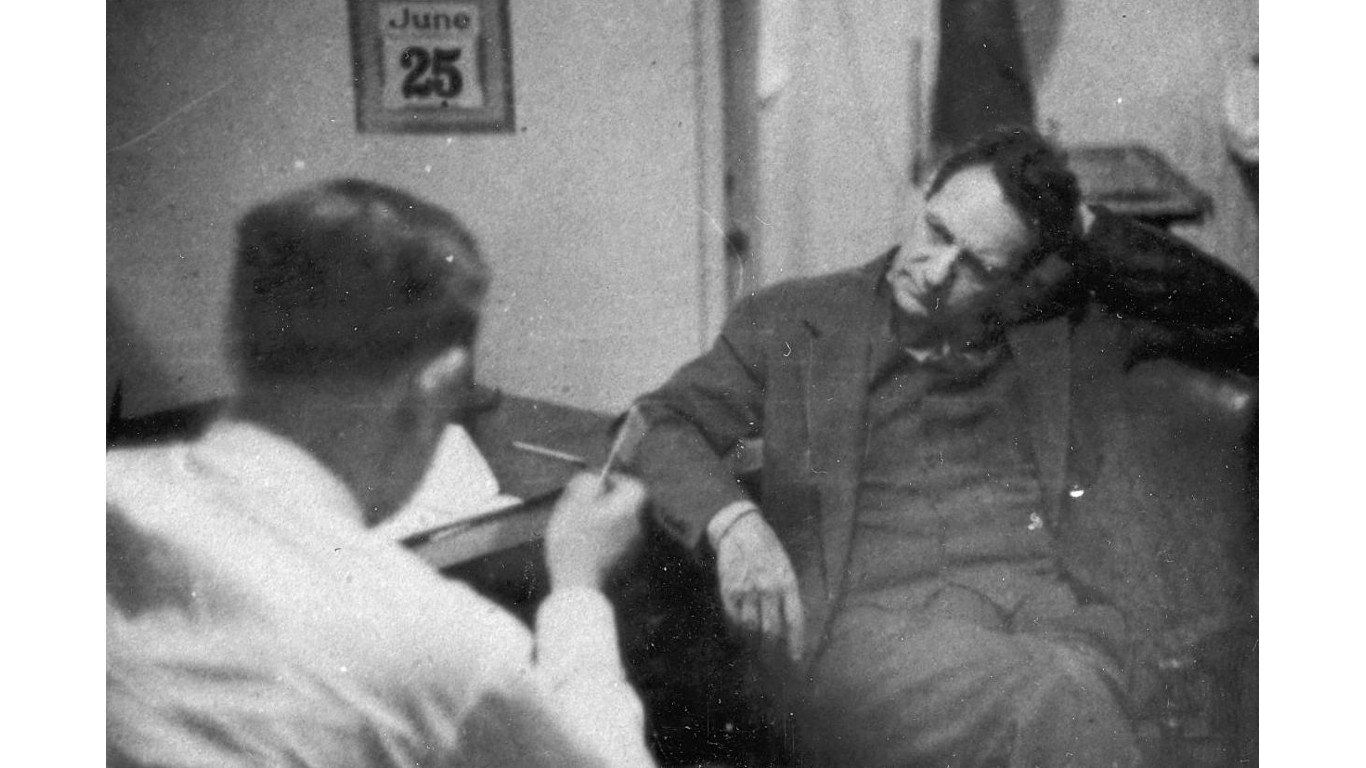
Nazi spy ring
> Year of the crime or start of the investigation: 1941
Before America and Germany battled each other on the battlefields in Europe, German spies had infiltrated the U.S. One Nazi spy ring, wih some 33 members, was organized by Frederick Joubert Duquesne, a South African native with a shady past (there were allegations of insurance fraud) who emigrated to this country in 1902, becoming a naturalized citizen 11 years later. The ring was busted with the help of William Sebold, a German-American who became a double agent for the FBI. By Dec. 13, 1941 – six days after Pearl Harbor – every member of the ring had either pleaded guilty or been convicted at trial.
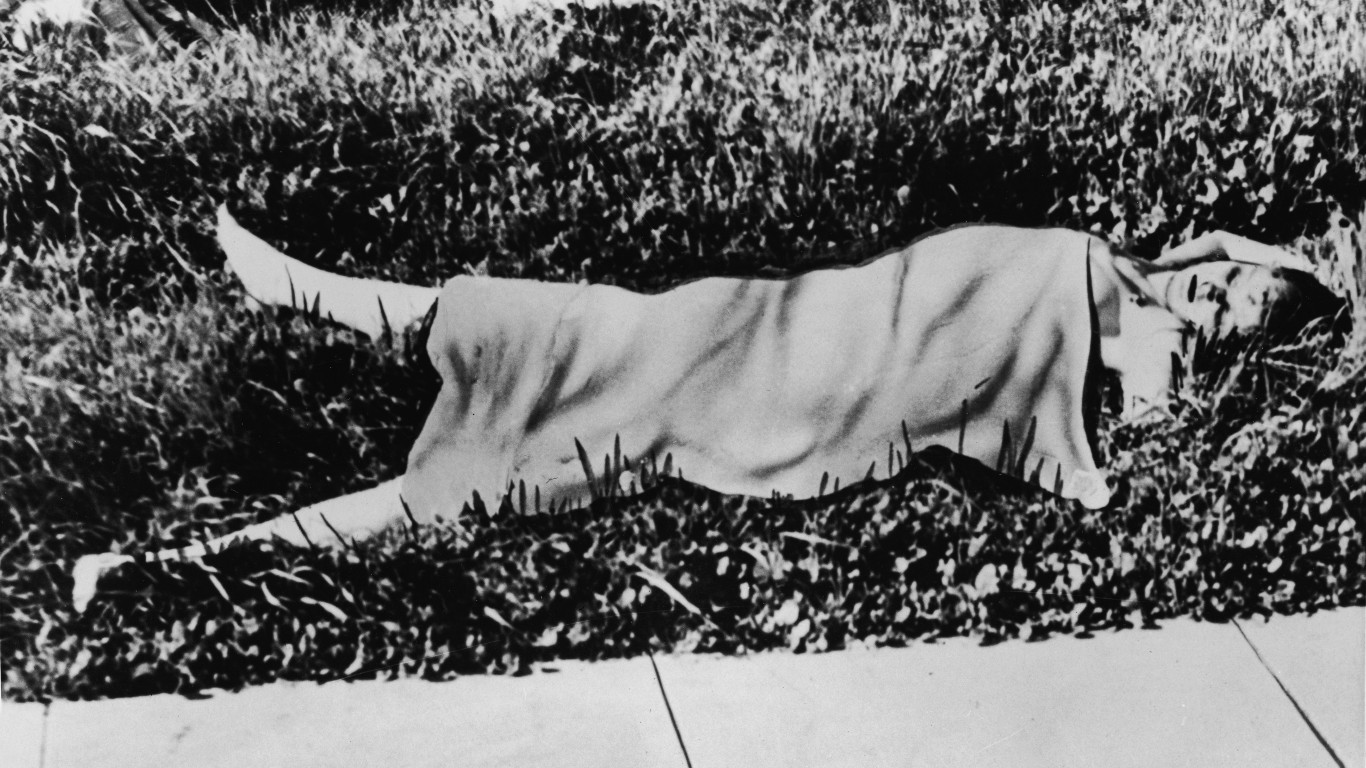
Murder of the Black Dahlia
> Year of the crime or start of the investigation: 1947
The grisly murder of 22-year-old Elizabeth Short, an aspiring actress, has fascinated filmmakers for years. “The Black Dahlia”, a fictionalized retelling of the murder, was made into a movie in 2006. When Short’s mutilated body was found in Los Angeles, she was quickly identified by police because of fingerprints taken when she applied for a job as a clerk at the commissary at an Army Air Force base in Lompoc. She had been arrested by the Santa Barbara police for underage drinking seven months later, so the Los Angeles police and the FBI had her mugshot. Short was dubbed the Black Dahlia for her dark outfits and as a reference to a recent movie, “The Blue Dahlia.” The FBI crisscrossed the country looking for clues, but to this day, no killer has been identified.
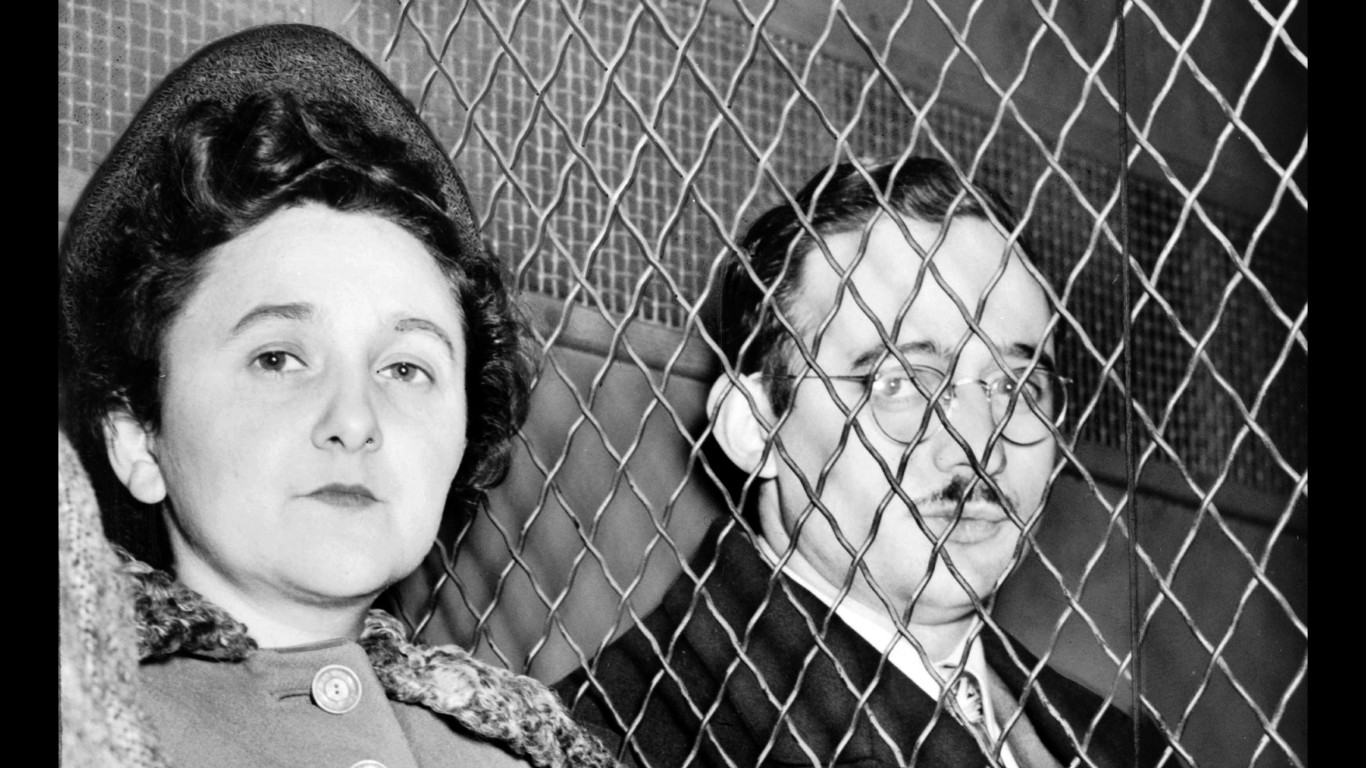
Atom bomb spy ring
> Year of the crime or start of the investigation: 1949
After World War II, Russia raced to build an atom bomb to keep up with the U.S. In 1949, the FBI learned that the blueprint for the American version of the bomb had been stolen several years earlier and turned over to a foreign power. The subsequent investigation led agents to Julius and Ethel Rosenberg, who were identified as the ringleaders in the plot to steal the information. Both were charged under the Espionage Act and found guilty. Although a campaign by sympathizers urged clemency, the two were executed in 1953.
[in-text-ad-2]

Robbing Brinks, Inc.
> Year of the crime or start of the investigation: 1950
On the evening of Jan. 17, 1950, five heavily disguised thieves surprised employees of Brinks, Inc. in Boston as they were stowing away undelivered cash. They tied the employees up and made off with more than $1.2 million in cash and another $1.5 million in checks and other securities – amounting to about $15 million and $19 million in today’s dollars. It was the largest robbery in the U.S. at the time. The heist was the brainchild of Anthony Pino, a criminal well-known in Massachusetts. On Jan. 12, 1956, six members of the gang, including Pino, were arrested. Pino, along with eight others, were later tried and convicted, receiving life sentences for robbery, two-year sentences for conspiracy to steal, and sentences of eight years to 10 years for breaking and entering at night. Though it took many years, the FBI got their men.
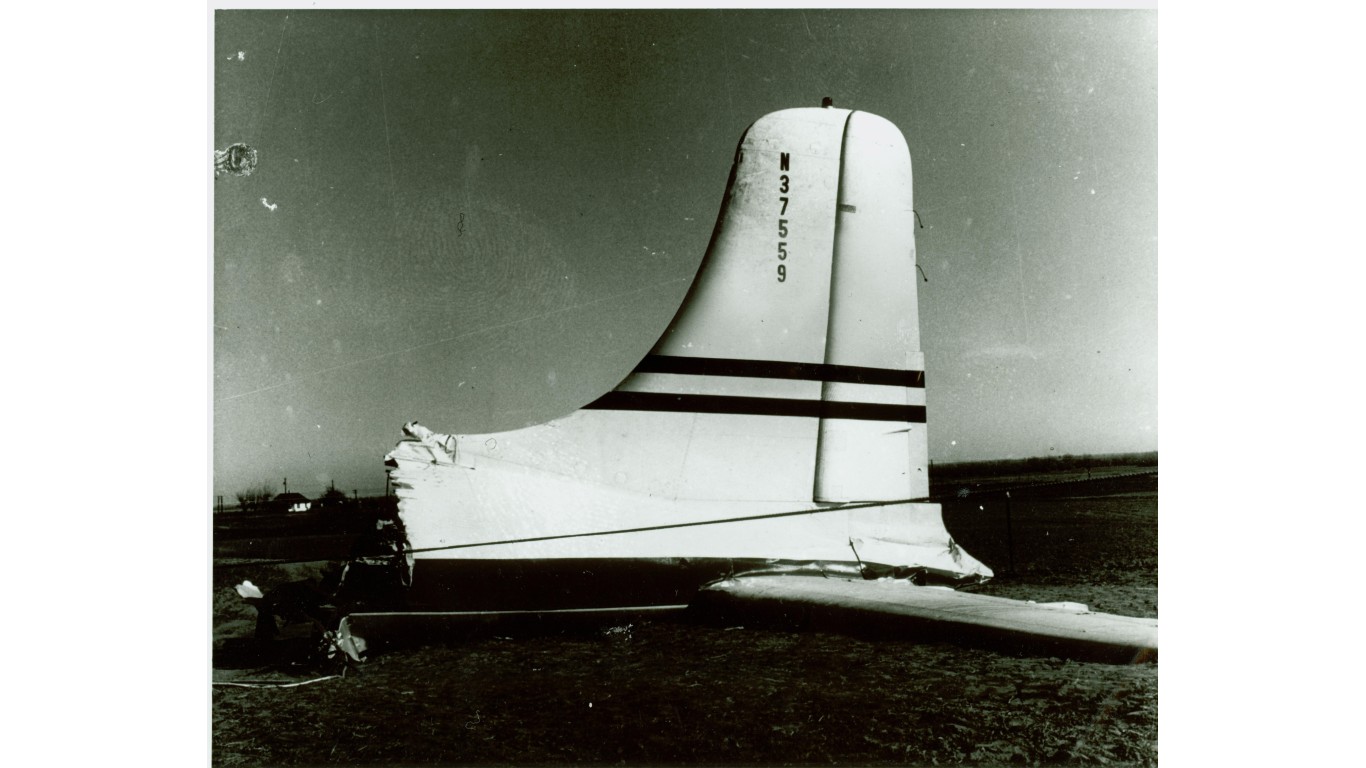
Downing of United Air Lines Flight 629
> Year of the crime or start of the investigation: 1955
A long-simmering quarrel between a mother and son led to a horrific crime over the skies of Colorado. On Nov. 1, 1955, United Air Lines Flight 629, left Stapleton Airport in Denver for Portland, Oregon. But soon after takeoff, a bomb on the plane exploded, and the aircraft crashed on a beet farm near Longmont, Colorado, killing all 39 abroad, including an infant, five crew members, and the wife of an aide to President Eisenhower. After combing over the passenger list, agents honed in on Daisie E. King, whose son, Jack Graham, would receive a substantial inheritance after her death. He was later identified as the maker of the bomb, convicted of first degree murder, and sentenced to death in the gas chamber.
[in-text-ad]

Kidnapping and murder of Emmett Till
> Year of the crime or start of the investigation: 1955
The recent movie “Till” recounted the racially motivated killing of Emmett Till, a 14-year-old from Chicago who was visiting family in Money, Mississippi. When the young man was accused of whistling at a white woman, two men kidnapped and killed him, shooting him in the head and throwing him into the Tallahatchie River. Roy Bryant and his half-brother J.W. Milam, were accused of the murder, but an all-male, all- white jury acquitted them. Long after the crime, Bryant and Milam confessed to a magazine journalist. Both are now deceased. The killing galvanized the Civil Rights movement in the 1950s.

Kidnapping of Peter Weinberger
> Year of the crime or start of the investigation: 1956
The kidnapping of one-month-old Peter Weinberger was unusual because the Weinbergers were not well-to-do, but a middle-class family on Long Island, New York. At the time, the law required the FBI to wait seven days before investigating a kidnapping. After that period had elapsed, agents pinpointed Angelo LaMarco, a Long Island taxi dispatcher and truck driver, through analysis of his ransom note, demanding $2,000. LaMarco abandoned the baby, who was later found dead in a wooded area. He was tried and convicted of kidnapping and murder and executed in Sing Sing. Because of the crime, the FBI waiting period for kidnapping cases was shortened to 24 hours.

Theft of a 33-carat diamond
> Year of the crime or start of the investigation: 1959
Vera Krupp, a German actress and wealthy divorcee of a German industrialist, owned the massive diamond. The center blue-white stone weighed more than 33 carats and was valued at $275,000 in 1959 (almost $3 million today). When the diamond was stolen from the owner’s ranch outside Las Vegas, a cross-country hunt led the FBI to John William Hagenson, a fugitive wanted in connection to a similar robbery in California. Hagenson and several accomplices were found guilty, but Hagenson, the ringleader, was freed on appeal. Vera Krupp got her diamond back. After she died, Richard Burton bought it for his then-wife, Elizabeth Taylor. It was sold again after Taylor’s death.
[in-text-ad-2]
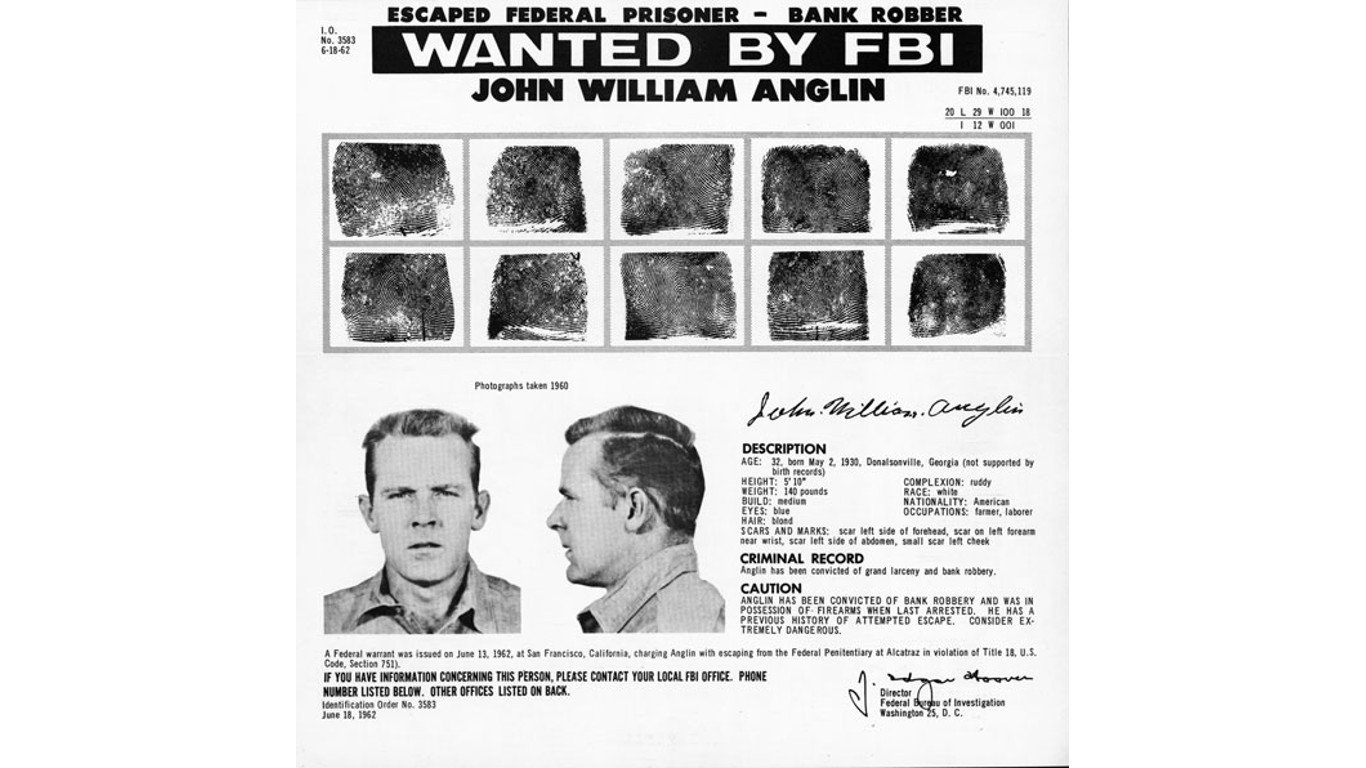
Alcatraz escapes
> Year of the crime or start of the investigation: 1962
Stuck in the middle of forbidding San Francisco Bay, Alcatraz once housed hardened criminals such as Al Capone and George “Machine Gun” Kelly. Between 1934 and its closing in 1963, 36 prisoners tried to escape in 14 separate attempts. Nearly all were caught or died in the rough waters surrounding the prison. Three men, however, may have succeeded – John and Clarence Anglin and Frank Morris. When guards found their beds occupied by realistic looking dummies, the search began. The men were never found, but it’s considered unlikely that they ever made it across the bay to Angel Island. The FBI officially closed the case on Dec. 31, 1979, but the U.S. Marshals Service continues to investigate. Clint Eastwood starred as Morris in a film based on the episode, “Escape from Alcatraz.”

Kidnapping of Frank Sinatra Jr.
> Year of the crime or start of the investigation: 1963
Two former high school classmates from Los Angeles – Barry Keenan and Joe Amsler – hatched a plan to kidnap the 19-year-old son of singer Frank Sinatra, looking to grab a huge ransom. On Dec. 8, 1963, the younger Sinatra was abducted from a lodge where he was performing in Lake Tahoe. The kidnappers, along with a third man, John Irwin, demanded a ransom of $240,000 (about $2.3 million today), which the elder Sinatra collected and gave to the FBI. Sinatra Jr. was released and most of the ransom money was recovered. The three men were convicted of kidnapping after Irvin’s brother tipped off the FBI.
[in-text-ad]

Assassination of JFK
> Year of the crime or start of the investigation: 1963
The nation still asks, “Who Killed JFK?” The assassination of the 35th president during a Dallas motorcade shocked the country. Lee Harvey Oswald was identified as the shooter after being spotted at the Texas School Book Depository. He also killed Dallas policeman J.D. Tippit. Oswald was later killed by Jack Ruby. Because Oswald was never brought to trial, we’ll never know if he really did it or what his motives were if he did. In 2013, special agent Robert Frazier discussed his part in the investigation as the bureau’s lead firearms and ballistics expert. At age 94, Frazier said he firmly believed Oswald was the assassin. “There has never been anything to indicate positively that anybody else was involved,” he said. Yet numerous conspiracy theories still abound about the killing.
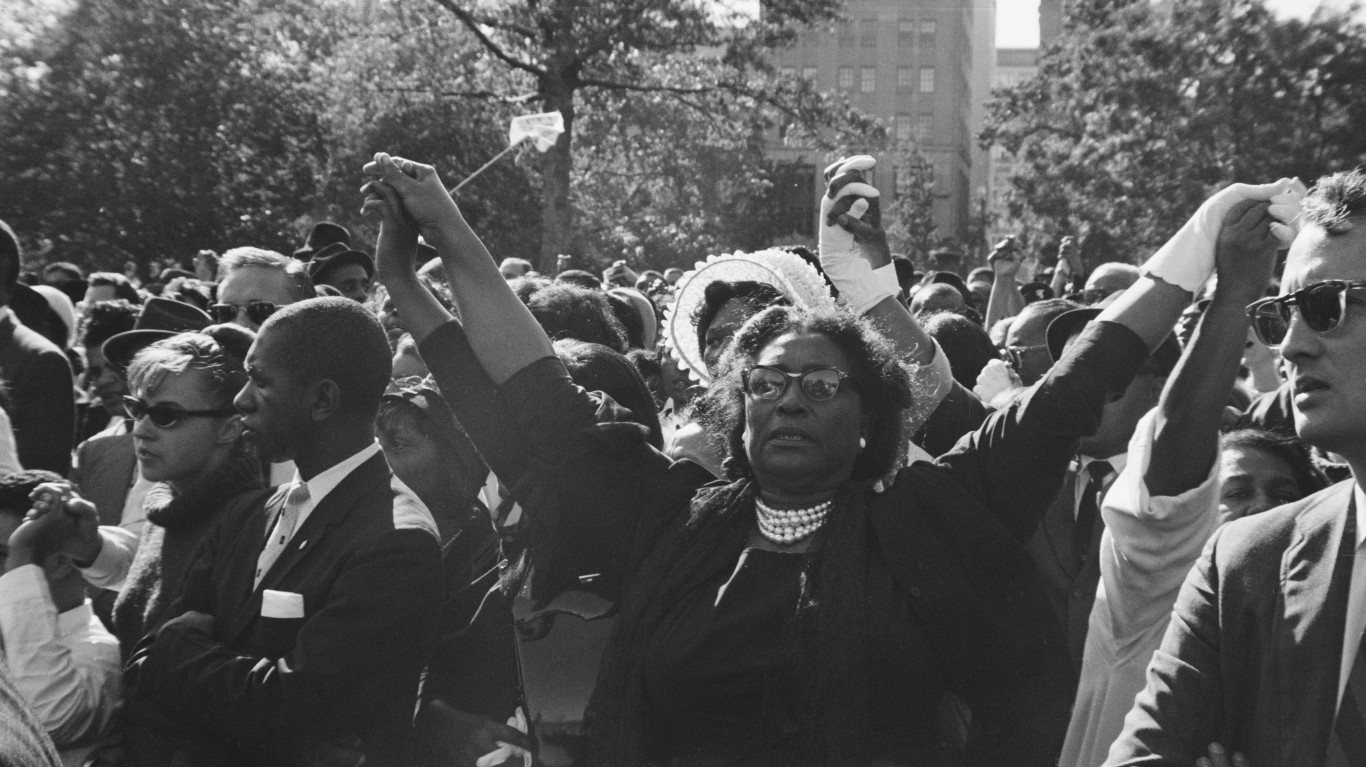
Church bombing in Alabama
> Year of the crime or start of the investigation: 1963
The bombing of a church in Birmingham that killed four young African-American girls served as a pivotal moment in the fight for civil rights. The bureau focused on four KKK members – Robert E. Chambliss, Bobby Frank Cherry, Herman Frank Cash, and Thomas E. Blanton, Jr. – as the culprits. For lack of evidence and the reluctance of witnesses to talk, charges weren’t filed, but in 1977, Alabama attorney general Robert Baxley got a conviction of Chambliss and he was sentenced to life in prison. Cash died in 1994, but Blanton and Cherry were tried and convicted in 2001 after new evidence was discovered. Both were sentenced to life in prison, and both died while incarcerated.

Mississippi Burning
> Year of the crime or start of the investigation: 1964
June 1964 was “Freedom Summer,” a time when civil rights advocates went on a campaign to register African-Americans in the South to vote. The move incensed the KKK, who burned a church where Freedom Rider volunteers Michael Schwerner and James Chaney had recently spoken, hoping to lure the men back to the area. Schwerner, Chaney, and a third man, Andrew Goodman, were arrested for speeding by a Neshoba County deputy sheriff named Cecil Price. They were released but Price followed them, and their burnt station wagon was later found with no sign of the three men. After an extensive search, their bodies were found on a local farm. In 1967, seven of the 18 men charged in the crime, including Price, were found guilty – not of murder but of conspiring to deprive the victims of their civil rights – and sentenced to three to ten years in prison. One of the men who was acquitted, Edgar Ray Killen, was later charged with manslaughter and convicted in 2005. The horrific nature of the crime pushed Congress to pass the Civil Rights Act of 1964.
[in-text-ad-2]

D.B. Cooper Hijacking
> Year of the crime or start of the investigation: 1971
D.B. Cooper appeared as a non-descript passenger when he boarded a Northwest Orient flight from Portland, Oregon to Seattle. Soon after liftoff, Cooper told a stewardess to get him four parachutes and $200,000 in $20 bills when the plane reached Seattle. After it landed, the flight’s 36 passengers were freed, and Cooper ordered the plane to fly to Mexico City. He never got there, instead parachuting out of the plane with the cash. The plane landed safely, but Cooper’s whereabouts remain a mystery to this day. He may have not survived the fall. A man named Richard Floyd McCoy (see below) was considered a suspect, but flight attendants couldn’t positively identify him as Cooper. The FBI dropped the case in 2016.
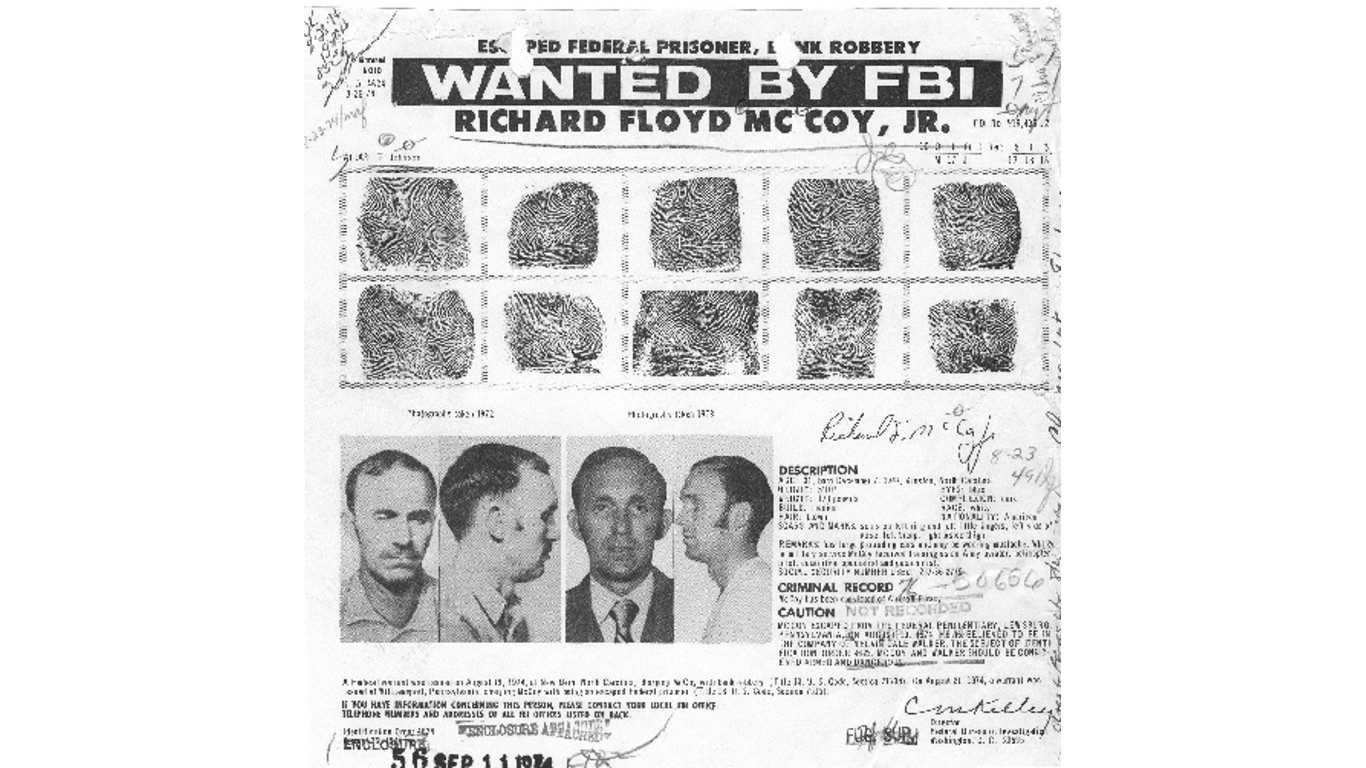
Hijacking a flight and parachuted from the plane
> Year of the crime or start of the investigation: 1972
On April 7, 1972, a passenger on a United Airlines plane en route from Newark to Los Angeles showed a flight attendant a grenade and demanded ransom. After landing in San Francisco, the hijacker commandeered the aircraft, releasing all passengers and one flight attendant. Threatening the crew with an explosive if any plane followed the aircraft, he then jumped out over Utah. An acquaintance of the hijacker fingered 29-year-old Richard Floyd McCoy, a Vietnam veteran, helicopter pilot, and avid skydiver. He claimed innocence, but was found guilty of aircraft piracy and interfering with flight crew members and sentenced to 45 years in prison. His appeal was denied by the U.S. Supreme Court in 1973. A year later, he and several other prisoners made a daring jailbreak. When the FBI tracked him down, he opened fire and was shot and killed. Because of the similarity in the crimes, he is thought by some to have been earlier hijacker “D.B. Cooper.”
[in-text-ad]

Kidnapping of Patty Hearst
> Year of the crime or start of the investigation: 1974
Heiress Patty Hearst was a 19-year-old college student living in San Francisco when she was snatched by the Symbionese Liberation Army, an anti-government terrorist group. The SLA’s leader, Donald DeFreeze, wanted to gain attention by kidnapping the offspring of a rich and prominent. However, a tape surfaced in which Hearst claimed that she had joined the group, and she was seen holding a gun during a bank robbery with other SLA members. An investigation led agents to a SLA safe house in Los Angeles. Police surrounded the house and during a gun battle, the structure caught on fire. Six members of the group, including DeFreeze, were killed. Hearst wasn’t present, but was later captured and charged with robbery and other crimes. The heiress claimed she was brainwashed, but was nevertheless sentenced to seven years in prison. President Carter commuted her sentence after two years and she was later pardoned.
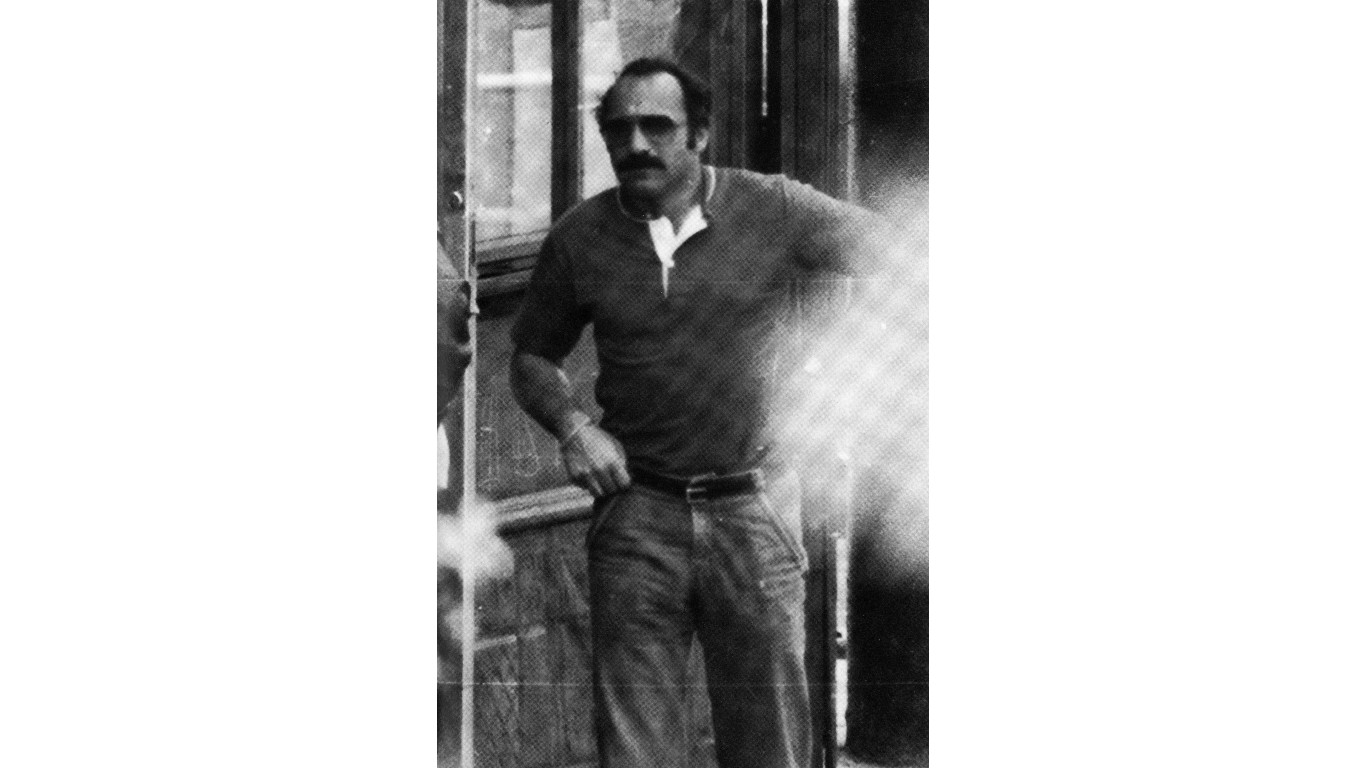
Donnie Brasco undercover
> Year of the crime or start of the investigation: 1976
Breaking up an organized crime family often depends on having an agent infiltrate the gang. FBI agent Joe Pistone (aka Donnie Brasco) did this brilliantly for six years, fooling the hardened mafiosi of the Bonanno, Gambino, Colombo, Genovese, and Lucchese crime families in New York City. The information Pistone gathered eventually led to the downfall of those criminal enterprises. The life of Pistone was made into a 1997 movie, titled with his alias, and starring Al Pacino and Johnny Depp.

ABSCAM
> Year of the crime or start of the investigation: 1978
What started as a sting operation to snatch some art thieves turned into a massive public corruption scandal. The FBI set up a fictitious company Abdul Enterprises (AB(dul)SCAM) to lure in crooks selling stolen art. With the help of an informant, the agency recovered two paintings worth a combined $1 million. The operation also netted nearly $600 million worth of fraudulent securities. But there was more. As the investigation progressed, politicians in New Jersey and Washington, D.C. offered to help the fake company’s fake sheik obtain asylum in the U.S. There was also a bribe having to with gambling licenses in Atlantic City. In the end, Senator Harrison A. Williams, Jr. (D-NJ), six congressmen, and other corrupt officials were found guilty. Although questions were raised around possible entrapment, the guilty verdicts were upheld. A fictionalized version of the events were later made into a 2013, “American Hustle.”
[in-text-ad-2]

The Unabomber
> Year of the crime or start of the investigation: 1978
For nearly two decades, Theodore Kaczynski, known as the Unabomber, had the country on edge, sending bombs through the mail that killed three people and injured two dozen. When Kaczynski sent the Bureau a 35,000-word screed, the agency took an unusual step and published it in the Washington Post, hoping someone could identify the author. It worked. The Unabomber’s brother, David Kaczynski, recognized his troubled sibling’s writings. The FBI arrested Theodore Kaczynski at his cabin in Montana on April 3, 1996, ending his reign of terror.
Operation Greylord
> Year of the crime or start of the investigation: 1984
Judges are supposed to uphold the law, but in Operation Greylord – named after the wigs worn by British judges – 92 public officials in Cook County, Illinois, were indicted, including 17 judges, 48 lawyers, eight policemen, 10 deputy sheriffs, eight court officials, and one state legislator. How did the FBI make its case? On a wiretap, the “bagman” Harold Conn was heard accepting bribes to be given to judges for fixing tickets.
[in-text-ad]

The most damaging spy in Bureau history
> Year of the crime or start of the investigation: 1985
In 1976, Robert Hanssen began his career as an FBI agent, but by 1985, he was working for the former Soviet Union, slipping the Russians classified secrets in exchange for more than $1.4 million in cash, bank funds, and diamonds. The FBI knew they had a mole in their midst for many years, but Hanssen was adept at covering his tracks and wasn’t unmasked until 2001 when Russian documents pinpointed him as a double agent. After pleading guilty to 15 counts of espionage, Hanssen was sentenced to life in prison without possibility of parole.

Operation Illwind
> Year of the crime or start of the investigation: 1988
Public corruption was once again the subject of an FBI investigation into bribery among defense officials and contractors. In 1988, the FBI, the Naval Criminal Investigative Service, the Defense Criminal Intelligence Service, the Air Force Special Investigations unit, and the IRS worked together to crack open the scheme. A tip from a whistleblower revealed that some Defense Department employees had taken bribes from businesses in exchange for inside information on procurement bids. The information aided some of the nation’s largest military contractors to win lucrative weapons systems deals. All told, more than 60 contractors, consultants, and government officials were prosecuted – including a high-ranking Pentagon assistant secretary and a deputy assistant secretary of the Navy. The case also reaped a total of $622 million worth of fines, recoveries, restitutions, and forfeitures. When the dust settled from the shocking case, the Procurement Integrity Act was amended in 1996 to tighten up procurement rules.
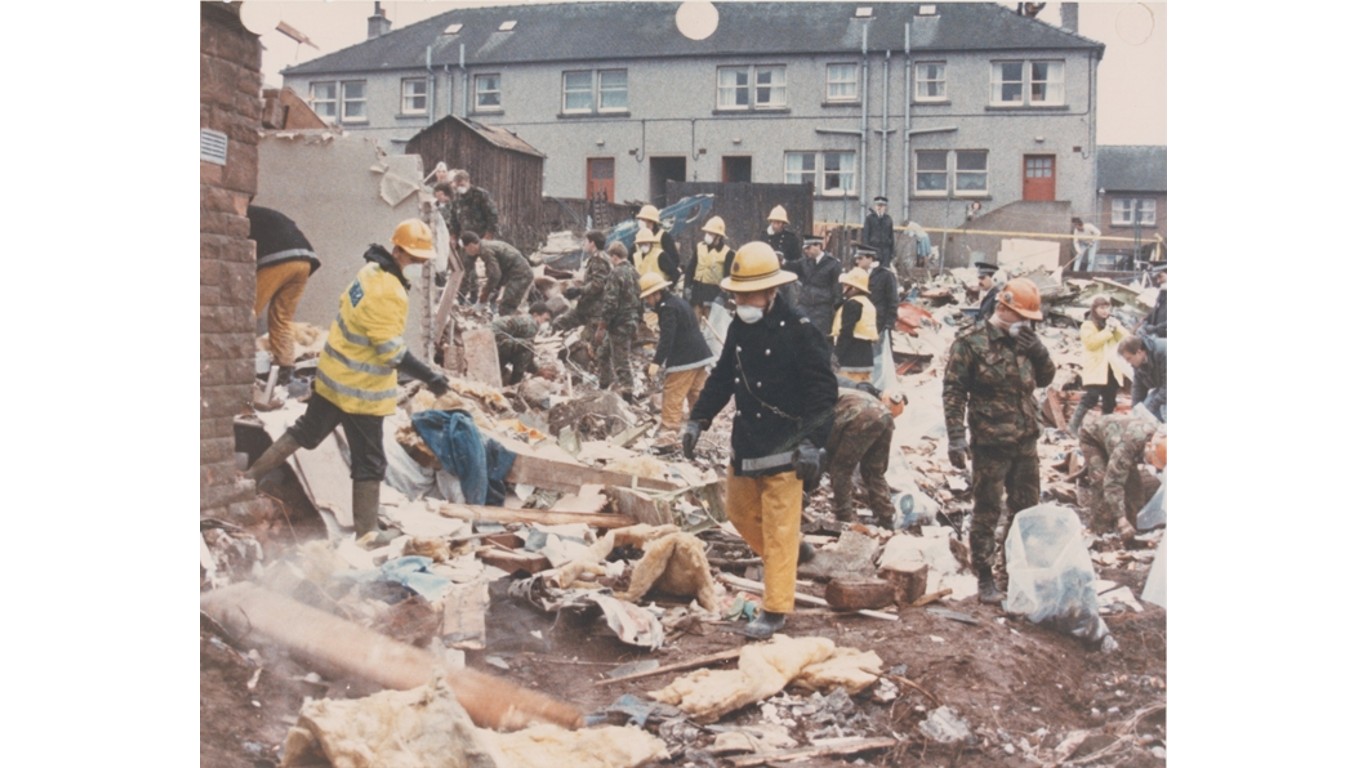
Pan Am 103 bombing
> Year of the crime or start of the investigation: 1988
Prior to 9/11, the world endured a shocking act of terrorism when Pan Am Flight 103 was blown up over Scotland, killing all 259 passengers, 190 of them Americans, as well as 11 people on the ground. A painstaking review of the wreckage led the U.S. and the U.K. to charge Libyan nationals Abdel Basset Ali al-Megrahi and Lamen Khalifa Fhimah with planting a bomb in the aircraft. A 2000 trial in a Scottish court acquitted Fhima but the following year convicted al Megrahi, sentencing him to life in prison. The Libyan government admitted to its part in the bombing and agreed to pay nearly $3 billion to the victim’s families. Al-Megrahi was released from prison after being diagnosed with cancer in 2009 and died in Libya in 2012.
[in-text-ad-2]
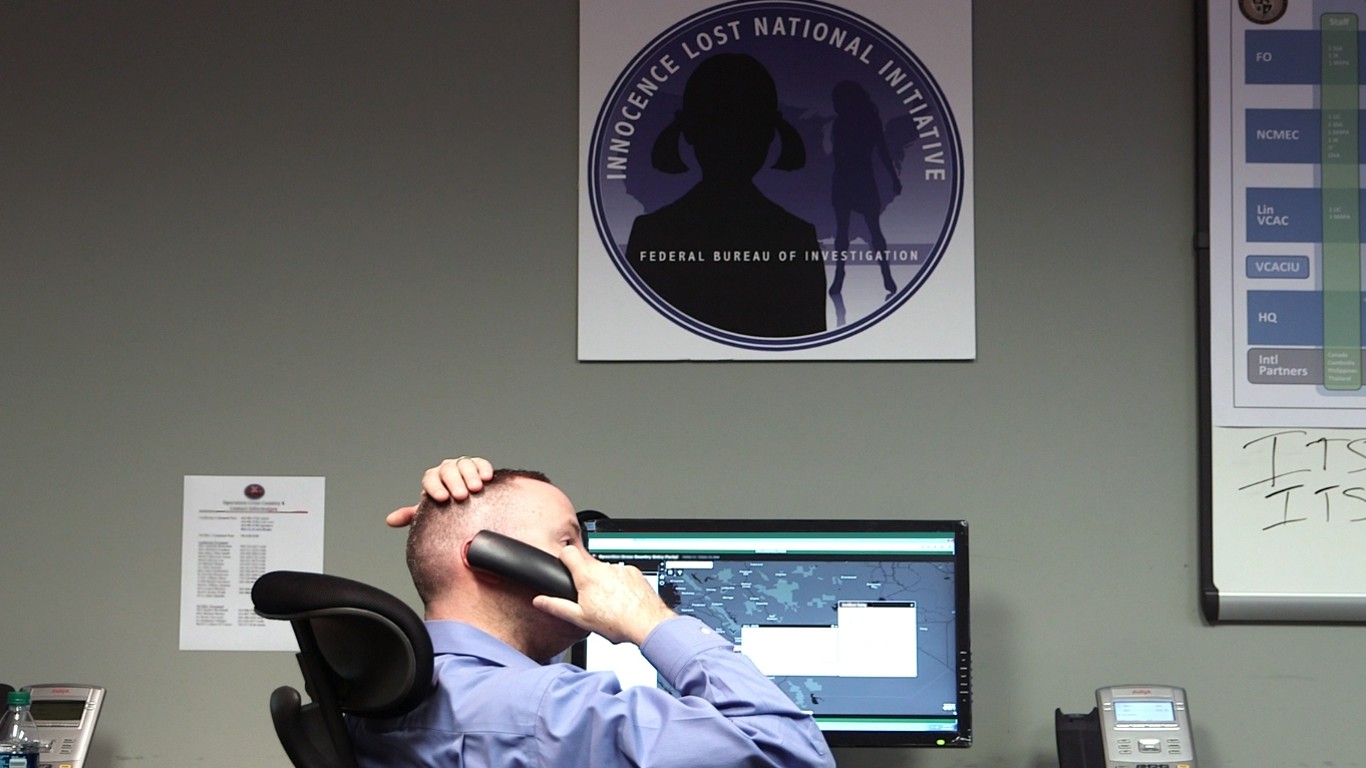
Transmitting images of minors online
> Year of the crime or start of the investigation: 1993
A missing child report accidentally led agents to break up a child pornography ring. When a 10-year-old boy was reported missing in Brentwood, Maryland, agents went door-to-door to solicit clues. They came upon two men who had been luring children with gifts and the offer of vacations. It was discovered that the men had taken their criminal activities online, “chatting” with young children and setting up meetings and sharing child pornography images. The men were eventually convicted of abusing children, although there was no evidence that they were involved in the missing child case. In 1995, the FBI launched the Innocent Images Initiative (now renamed as part of the Violent Crimes Against Children Unit) to catch child predators. Since 2007, the FBI has won 6,800 convictions. Sadly, the missing Maryland boy was never found.
Oklahoma City bombing
> Year of the crime or start of the investigation: 1995
The morning of April 19, 1995, began like any other at the Federal Building in downtown Oklahoma City – but at 9:02 a.m., a bomb exploded in a truck parked outside the building, killing 168, including 19 children. Although it was first assumed the bombing was the act of foreign terrorists, the investigation led the FBI to ex-soldier Timothy McVeigh, who had rented the truck. McVeigh resented the government for its actions at Waco, Texas, two years earlier when the agents stormed the compound of a cult leader, killing more than 80 people, including at least 20 children. He was convicted and sentenced to death for the mass murder and executed on June 11, 2001.
[in-text-ad]
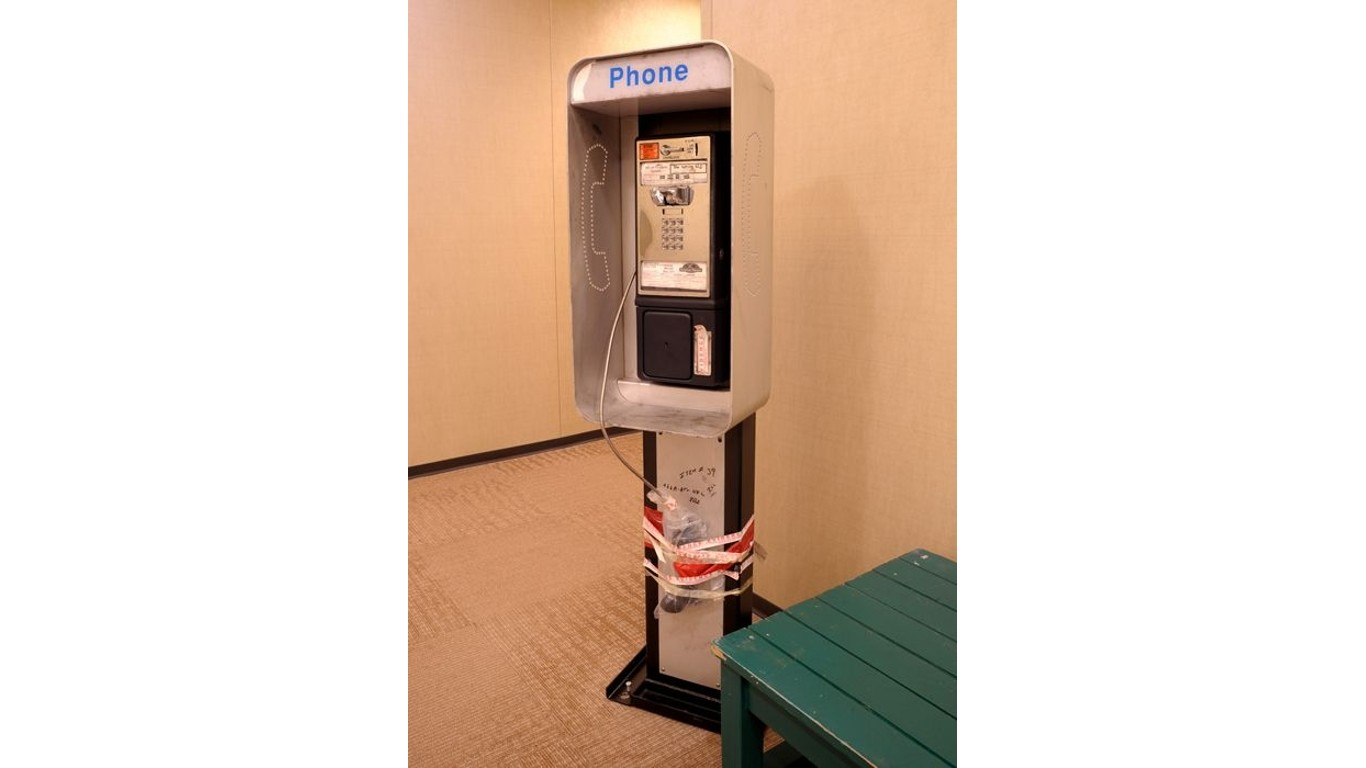
Atlanta and Birmingham bombings
> Year of the crime or start of the investigation: 0
Eric Robert Randolph went on a bombing spree from 1996 to 1998, setting off explosives in Atlanta and Birmingham, Alabama, that killed two and injured hundreds. The first was a bomb detonated at the 1996 Summer Olympics in Atlanta, killing one woman, though Randolph had called police to warn them about the bomb. (Security guard Richard Jewell was unjustly accused of being the bomber, and was considered the FBI’s prime suspect for some time.) Randolph subsequently bombed a lesbian bar and an abortion clinic in the Atlanta area and an abortion clinic in Birmingham – the latter explosion claiming the life of an off-duty policeman. Put on the FBI’s most wanted list, Randolph eluded agents until he was captured in 2003. He pled guilty to Federal charges stemming from the bombings and is currently serving multiple life sentences with no possibility for parole.
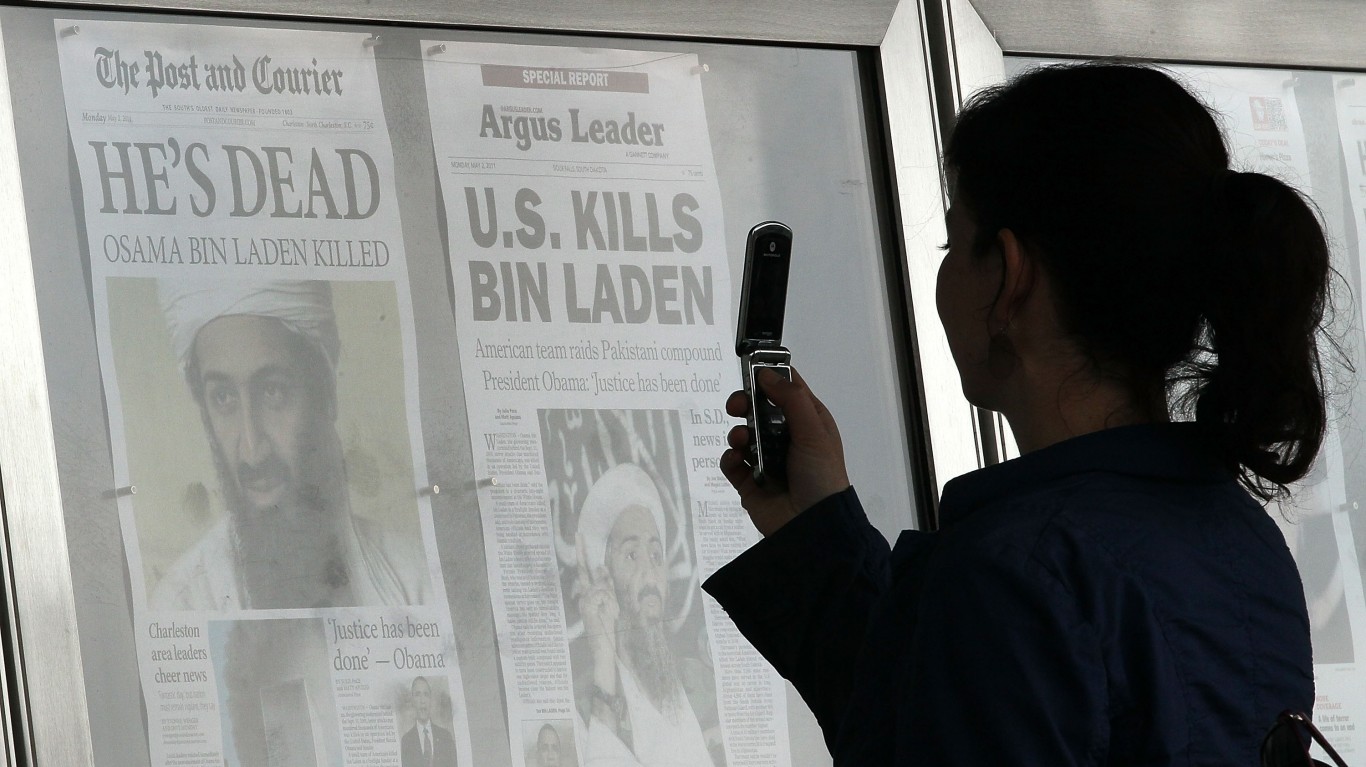
Bombing of American embassies in East Africa
> Year of the crime or start of the investigation: 1998
Before 9/11, al-Qaeda was behind the bombings of the American embassies in Nairobi in Kenya and Dar es Salaam in Tanzania on the same day – Aug. 7, 1998. The blasts killed 224 people, including 12 Americans. FBI agents rushed overseas to comb through clues, which eventually linked the terrorist group to the crime. In 1998, Osama Bin Laden and several members of his network, including his military commander, Muhammad Atef, were named in an indictment based on the investigation. Both have since been killed. More than 20 people have been charged in connection with the bombings. Seven are serving life sentences in U.S. prisons. The violent acts prompted the agency to step up its anti-terrorism efforts abroad.

The Melissa computer virus
> Year of the crime or start of the investigation: 1999
Anyone using a computer today is hyper-aware of computer viruses. Less so a decade ago, when a programmer named David Lee Smith infiltrated an AOL account and used it to spread a virus under the guise of giving people access to adult content. By late March, the virus, named after a stripper Smith knew, had taken over the Internet. Although Smith had no intention of stealing money or information, his virus clogged up the email servers at 300 corporations and government agencies. Luckily, service was restored in a matter of days. With a tip from an AOL representative, the FBI and New Jersey law enforcement traced the virus to Smith, who was sentenced to 20 months in federal prison and fined $5,000. After the crime, the FBI established the National Cyber Division to stop online crimes.
[in-text-ad-2]

Anthrax attacks
> Year of the crime or start of the investigation: 2001
A nation on edge after the 9/11 attacks was again terrorized by a series of mailings carrying the poison anthrax. The anthrax-filled letters killed five and sickened 17. The FBI, the U.S. Postal Service, and other law enforcement agencies, including Federal prosecutors from the District of Columbia and the Justice Department’s Counterterrorism Section, banded together to track down the sender. The investigation narrowed the culprit down to Dr. Bruce Ivins. Before he could be charged, Ivins took his own life and the investigation formally concluded in February 2010 – but not before the FBI developed new scientific techniques to combat bioterror attacks.
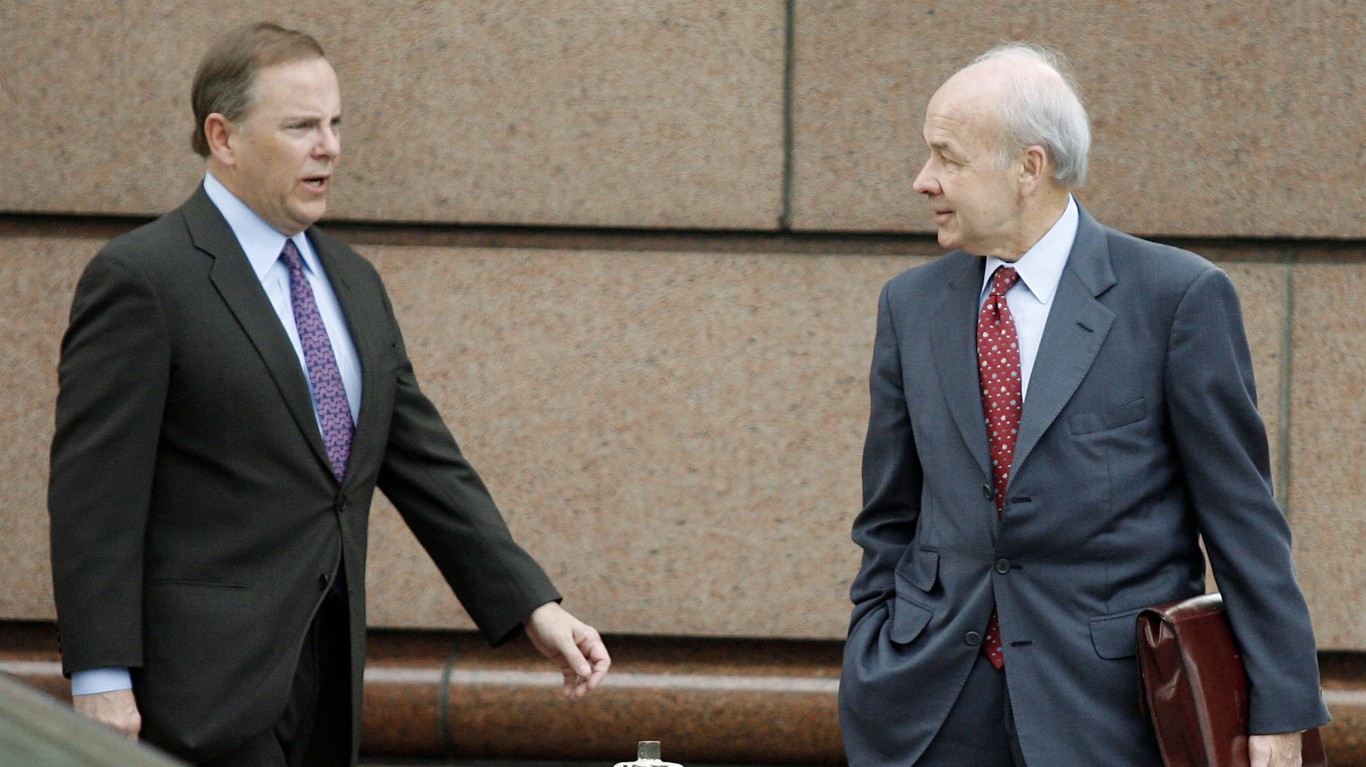
The collapse of Enron
> Year of the crime or start of the investigation: 2001
In 2001, the FBI broke open one of the most complex and far-reaching white collar crimes in the country’s history. After the Texas-based energy and commodities company Enron declared bankruptcy in December 2001, investors and employees were left penniless. And what started as a two-agent investigation expanded to a 45-member Enron Task Force, which combined investigators and analysts from the FBI, the Internal Revenue Service Criminal Investigation Division, and the Securities and Exchange Commission, and prosecutors from the Department of Justice. After combing through 3,000 boxes of evidence and interviewing more than 1,800 people, agents uncovered shady accounting practices that enriched Enron executives. In the end, 22 people, including the chief executive of the company, were convicted of fraud.
[in-text-ad]
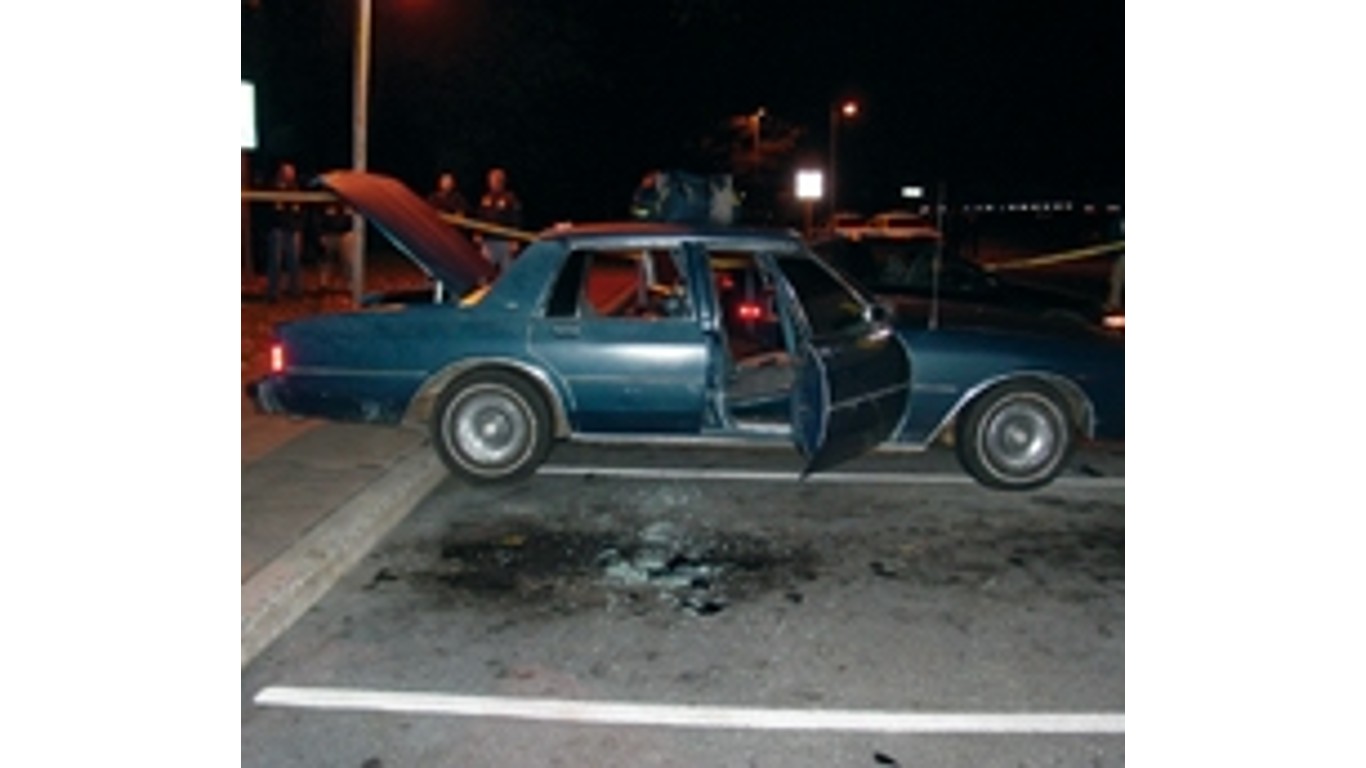
Beltway snipers
> Year of the crime or start of the investigation: 2002
In 2002, a pair of snipers terrorized the citizens of the Washington, D.C., area. It began with the murder of a 55-year-old man in a parking lot in Wheaton, Maryland. The next day, four more people were killed in a similar fashion while going about their everyday lives. All told, 10 people were gunned down and three critically injured, including FBI agent Linda Franklin. A cross-country investigation led agents to two men – John Allen Muhammad and Lee Boyd Malvo. Both were identified from their arrest records in Alabama and Washington state. Agents were able to identify the car registered to Muhammad, a blue Chevy Caprice with New Jersey plates. On October 24, FBI agents and other law enforcement officers arrested Muhammad and Malvo along with and seized the rifle they used in the killings. Malvo later admitted that he and Muhammad had earlier shot people in California, Texas, Florida, and Louisiana. Both were tried several times in different jurisdictions. Malvo is serving a life sentence without parole, and Muhammad was executed on Nov. 10, 2009.

Hurricane Katrina fraud
> Year of the crime or start of the investigation: 2005
Damage to the FBI’s New Orleans office did not stop the Bureau from investigating fraud related to Hurricane Katrina. Soon after the flood waters receded, the agency established the Hurricane Katrina Task Force to uncover fraudulent claims against the government. In 2006, The Government Accountability Office released a report estimating that potentially fraudulent individual assistance payments related to hurricanes Katrina and Rita (which hit the Gulf Coast a month after Katrina) ranged from $600 million to $1.4 billion. As of 2009, a total of 1,300 individuals have been indicted for Katrina-related crimes, and the Bureau now operates a Disaster Fraud Hotline where similar crimes can be reported.
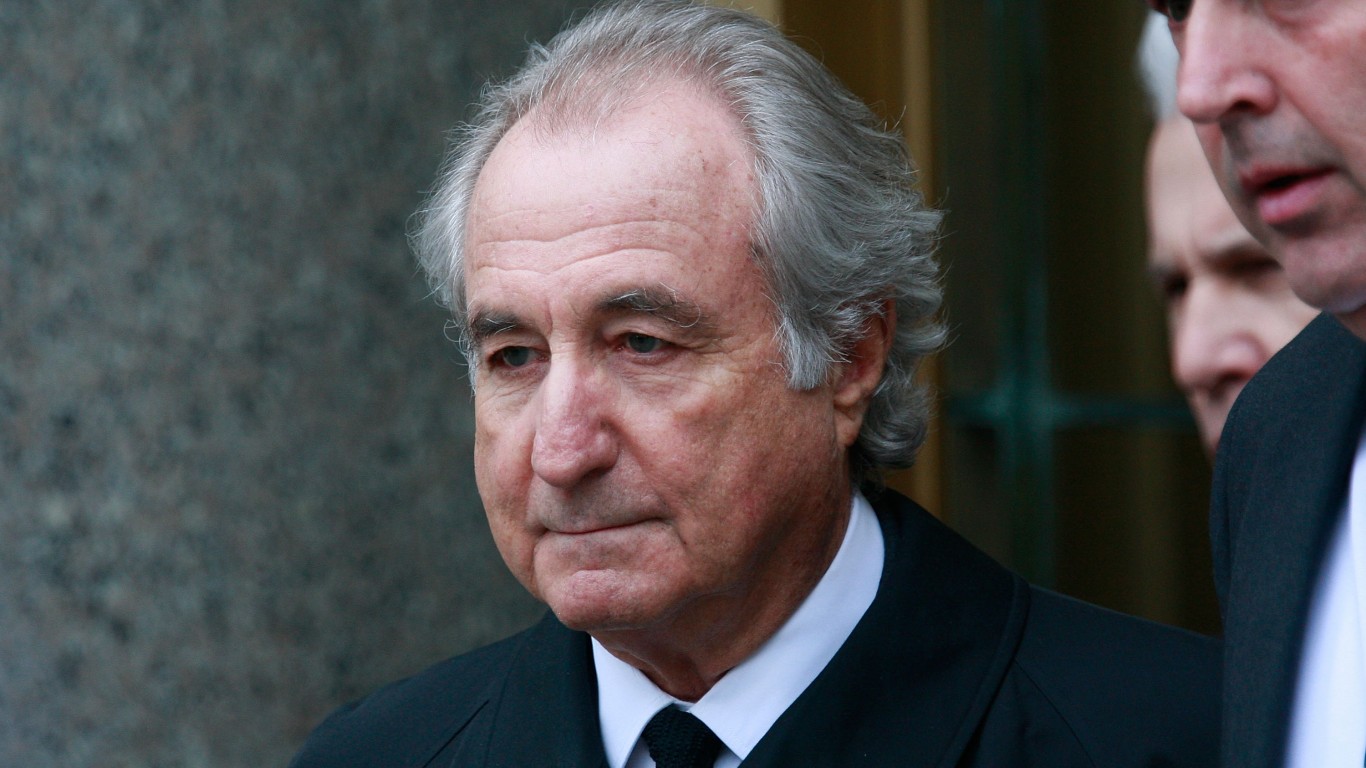
History’s biggest Ponzi scheme
> Year of the crime or start of the investigation: 2008
Outwardly, Bernie Madoff was a successful investment manager, while in reality, he was running the biggest Ponzi scheme in U.S. history. Promising high returns to investors, he instead took money from new clients to pay back earlier investors or for his personal use. When questions about Madoff’s business practices arose in business publications, his books were audited by the SEC. With his firm running out of money, Madoff was arrested on Dec. 11, 2008, after admitting to his sons that he was running a Ponzi scheme. Madoff was sentenced to 150 years in prison, but died in 2021 while in a correctional facility in North Carolina at age 82. The Bureau continued to investigate his associates, with 14 charged. Victims of his fraud can recoup some of their losses through a compensation fund managed by the Department of Justice. The monies come from assets held by Madoff that were seized by the government. Last year, the Justice Department announced that it had distributed more than $4 billion to Madoff’s victims.
Thank you for reading! Have some feedback for us?
Contact the 24/7 Wall St. editorial team.
 24/7 Wall St.
24/7 Wall St.